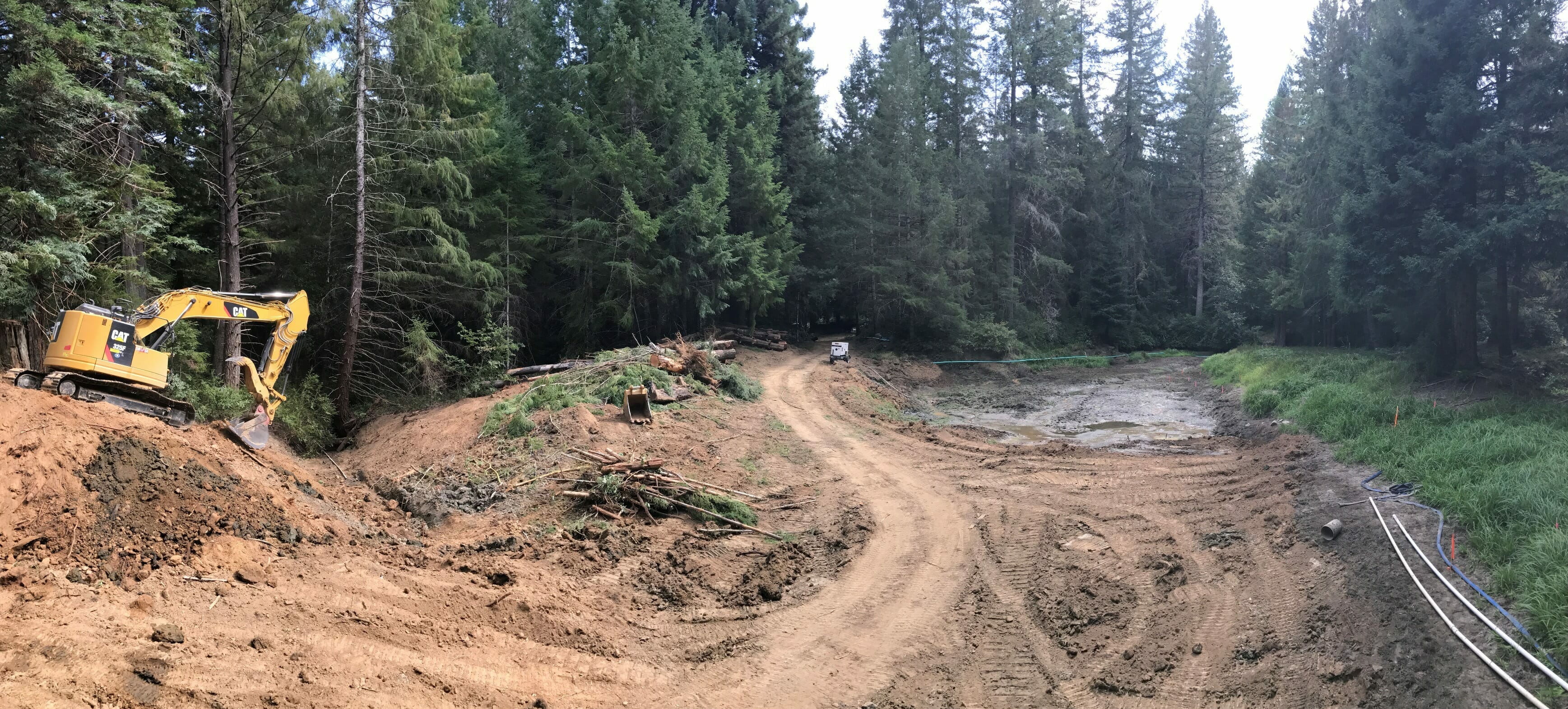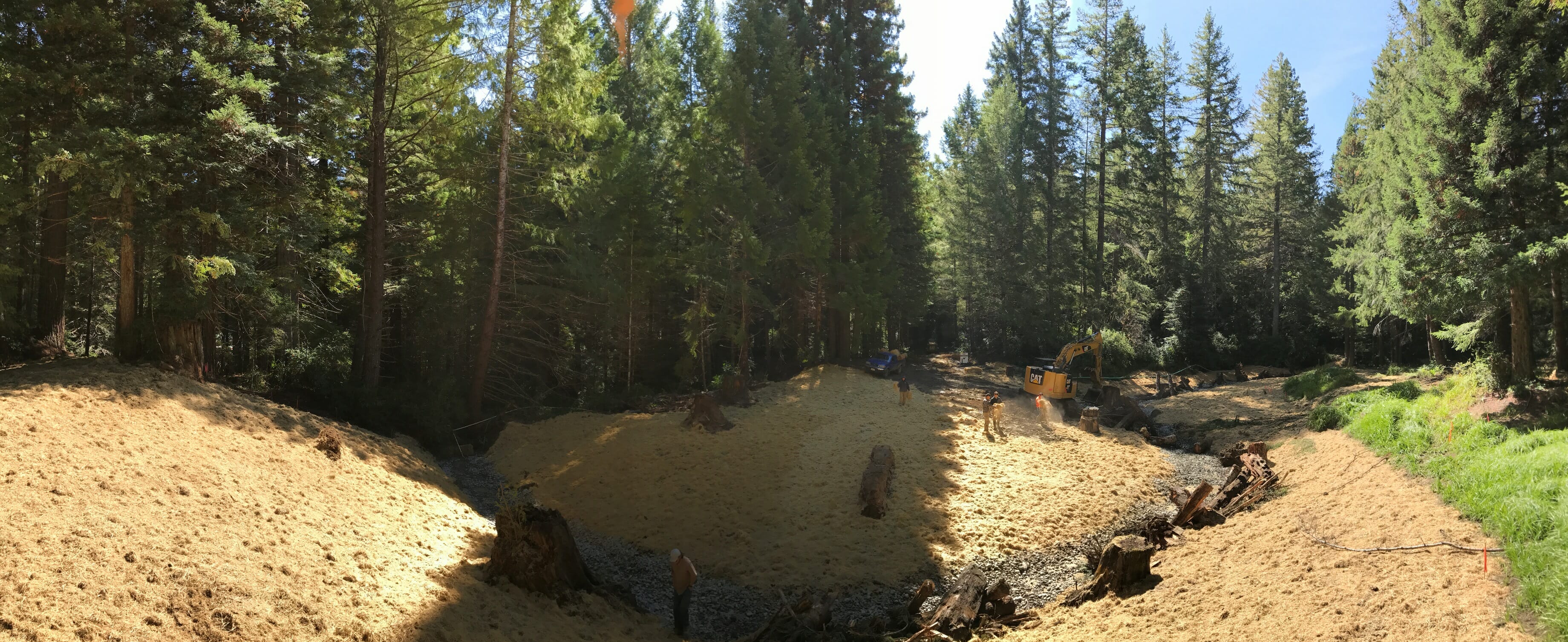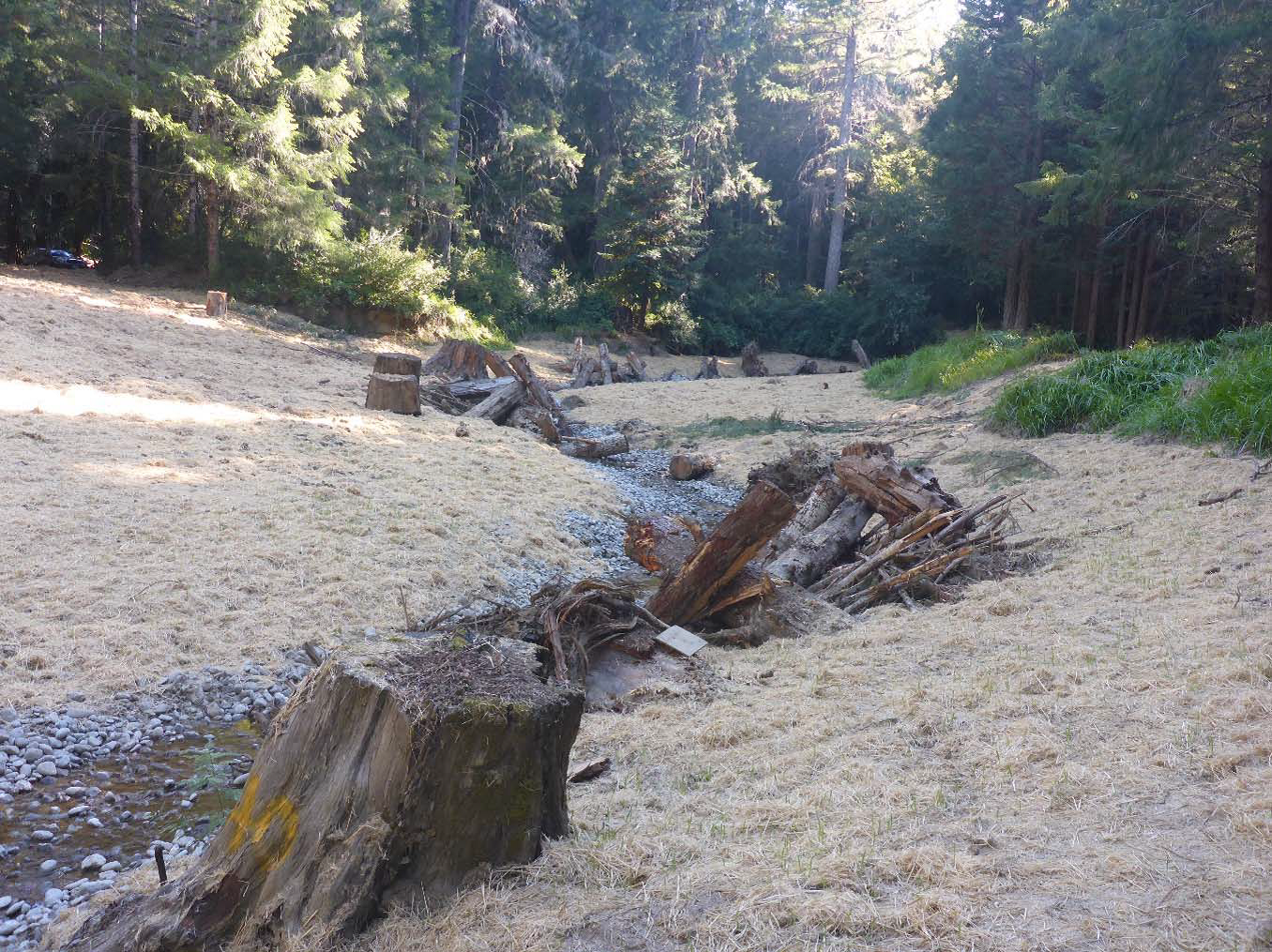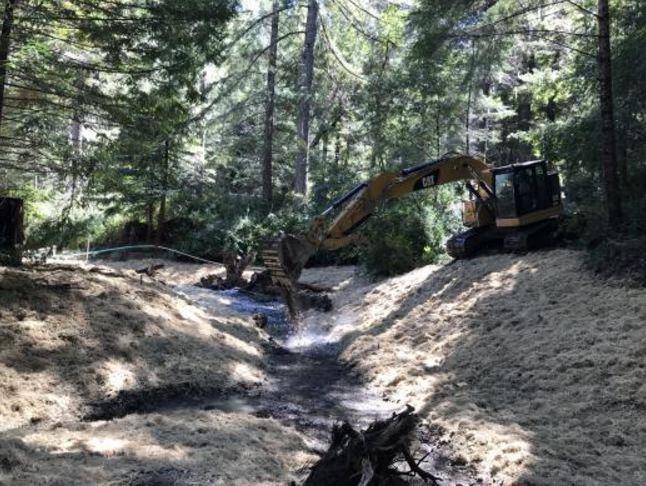Construction phase, Jack of Hearts Creek Coho habitat restoration project
The rarest species of salmon in California is getting some help in a legendary coastal river system, thanks to Trout Unlimited’s North Coast Coho Project (NCCP) and partners. Recently, the NCCP finished the construction phase of a major fish passage and water quality improvement project in Jack of Hearts Creek, an important tributary to the South Fork Eel River.
As described in TU’s 2015 State of the Trout report, a majority of California’s native salmonids are at risk, and a few are teetering on the edge of oblivion. One of the most imperiled is Oncorhynchus kisutch, the Coho (silver) salmon, historically the signature fish of coastal drainages—especially smaller ones—from Santa Cruz to the Oregon border.
That’s why, when TU launched its program work in the Golden State some two decades ago, our inaugural project was an initiative dedicated to recovering Coho by restoring habitat and fish passage throughout the fabled North Coast.
 title=”” typeof=”foaf:Image” />
title=”” typeof=”foaf:Image” />
The Jack of Hearts Creek project site (before)
The Eel River, the centerpiece of steelhead fishing in a region sometimes referred to as the Lost Coast, is California’s third largest river system. The South Fork of the Eel, in particular, retains relatively high habitat values and is the focus of intensive Coho and steelhead restoration efforts.
The California Department of Fish and Wildlife considers the South Fork Eel to have a significant remnant population of Coho Salmon (CDFG, 1996; TMDL, 1999). Fisheries scientists from the University of California (Brown, 1994; TMDL, 1999) found that the South Fork Eel population of Coho is important because it has little hatchery influence and retains high genetic integrity.
Many of the South Fork Eel’s smaller tributaries are important as spawning and rearing habitat for Coho and steelhead. One of these is Jack of Hearts Creek. In 2012, for example, CDFW found 44 Coho spawners and 16 redds in Jack of Hearts Creek.
 title=”” typeof=”foaf:Image” />
title=”” typeof=”foaf:Image” />
The Jack of Hearts Creek project site (after)
The goal of the Jack of Hearts Creek project is to improve instream habitat by removing two total barriers to fish passage, treat sediment sources, and install large woody material in the creek. This project was rated a very high priority by federal and state fisheries managers due to the productivity of Jack of Hearts Creek as Coho habitat and the potential for catastrophic failure of a large instream barrier that limited migration for all life stages of salmonids.
Now that the construction phase is completed, the project proceeds to re-planting native vegetation in the stream corridor, and then to a monitoring phase.
The upshot of this project is restoration of fish access and stream habitat in nearly one-quarter mile of channel and preventing delivery of some 1,295 cubic yards of spawning gravel-choking sediment into the creek through removal of an old earthen dam and road treatments at multiple stream crossings. It involves all of the typical ingredients of a successful NCCP project: cooperation with multiple landowners; comprehensive physical treatments that deliver multiple habitat and fish passage benefits; and several years of planning, fundraising and execution.
 (L) Large wood structure installed in the new-and-improved stream channel, Jack of Hearts Creek
(L) Large wood structure installed in the new-and-improved stream channel, Jack of Hearts Creek
The North Coast Coho Project works through cooperative partnerships with timber and gravel companies, private landowners, technical consulting firms, local non-profit organizations, and state and federal agencies. Since 2008, the NCCP has raised and leveraged nearly $25 million for habitat restoration through more than 75 projects improving thousands of acres of habitat in the Eel, Ten Mile, Noyo, Big, Navarro, Garcia, and Russian Rivers.
For many years California coastal coho have been locked in a bitter competition with the southern coastal steelhead for the title of Rarest California Salmonid. But thanks to the achievements of the first program TU started in California, through efforts like the Jack of Hearts Creek barrier removal and habitat improvement project, the prognosis for Coho here is moving from bleak to cautiously optimistic.
The Jack of Hearts Creek habitat restoration project was made possible by funding from the Fisheries Restoration Grant Program of the California Department of Fish and Wildlife, and by in-kind contributions from the landowner. For more information on the NCCP contact NCCP director Anna Halligan at ahalligan@tu.org.



